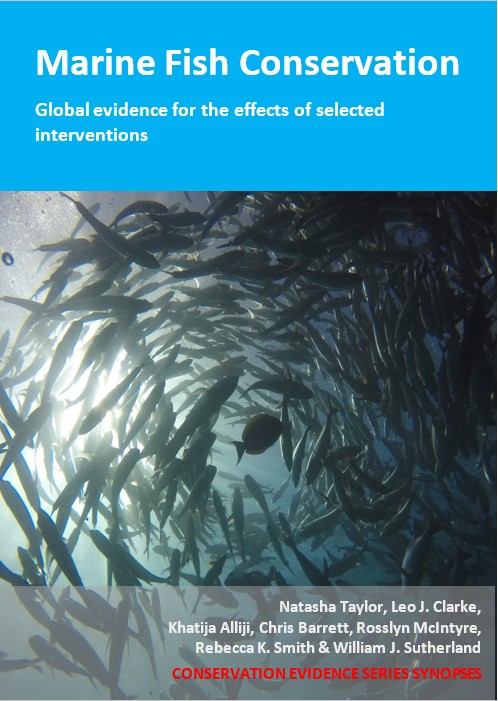Establish handling and release protocols in non-recreational fisheries
-
Overall effectiveness category Awaiting assessment
-
Number of studies: 2
View assessment score
Hide assessment score
How is the evidence assessed?
-
Effectiveness
not assessed -
Certainty
not assessed -
Harms
not assessed
Study locations
Supporting evidence from individual studies
A study in 2014 in pelagic waters of the eastern Atlantic Ocean off the African continent (Escalle et al. 2016) reported that tracked whale sharks Rhincodon typus released using an enhanced protocol from purse-seine nets targeting tuna Thunnus spp. survived for at least 21 days and movements showed no unusual behaviour. Of six satellite-tagged whale sharks, data were transmitted only from five (the fate of the other was unknown) for a period of at least 21 days following shark release. Three tags detached at the programmed 30 days after release, and two at 21 and 71 days (programmed to 30 and 90 days respectively). The detachment after 21 days was due to a deep dive, and the cause of the detachment after 71 days was unknown, although all sharks were assumed to have survived post-release from the purse-seine nets. Movement patterns, including vertical dives, were considered within normal behaviour (data presented graphically). Six whale sharks were tagged after capture in tuna purse-seine nets in the eastern Atlantic in 2014. Sharks were released using an improved version of a previously proposed method involving a cable being first fed through the net, then attached to the opposite edge of the net near the whale shark’s head. The net is then slackened, and the cable tightened to position it underneath the whale shark’s head, which rolls over the float line of the net as the cable is tightened. The float line then sinks with the weight of the shark, which rolls out of the net as the cable is alternately tightened and slackened. Full details of the handling methods are provided in the original study.
Study and other actions testedA study in 2014 in an area of coral reef on the Great Barrier Reef, South Pacific Ocean, Australia (Raby et al. 2018) found that the ability of fish to return to the reef or seabed after handling and release was affected by handling technique and air exposure. Average time spent immobile following release was higher after “high stress” handling (1 min forced exercise, 5 min air exposure) than “low stress” handling (no forced exercise or air exposure) for coral trout Plectropomus leopardus (4 vs 9 s), emperor Lethrinus spp. (0 vs 1 s) and snapper Lutjanus carponotatus (0 vs 9 s). Time to reach the nearest reef was also higher after high stress handling than low stress handling (trout: 13 vs 19, emperor: 10 vs 19, snapper: 18 vs 33 s), although the time taken to find shelter was similar (coral trout: 20 vs 24, emperor: 20 vs 135, snapper: 108 vs 130 s). In addition, fish subject to high stress handling (all species) took longer to reach the ocean floor and exhibited lower tailbeat and ventilation rates. The proportion of time immobile was similar between treatments for all species except snapper, which spent more time immobile after high stress handling. Sixty-two fish caught by hook and line from reefs at depths of 5–20 m were transferred to a 30,000 l tank where they were fed every 2–3 days. After 1–5 days, fish were transported by boat to a release site 8–12 m from the nearest reef. Fish were released after high or low stress handling to simulate angling practice.
Study and other actions tested
Where has this evidence come from?
List of journals searched by synopsis
All the journals searched for all synopses
This Action forms part of the Action Synopsis:
Marine Fish Conservation





)_2023.JPG)














